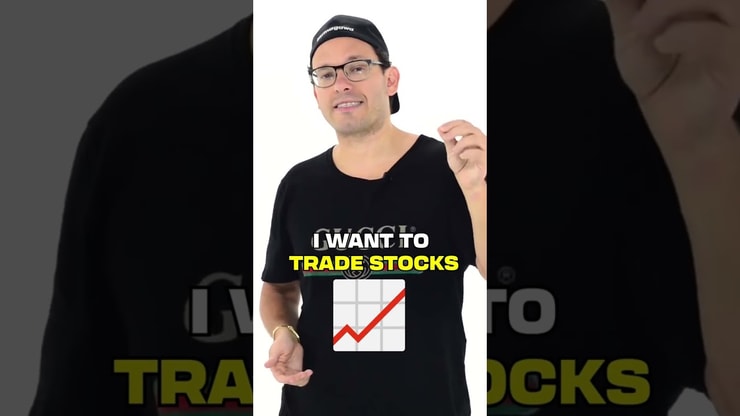Swing trading indicators are tools used by traders to identify potential entry and exit points in the market. These indicators are crucial for analyzing price movements, trends, and volatility, helping swing traders make informed decisions. This article will delve into the best swing trading indicators, how to use them, and why they’re essential for anyone looking to succeed in swing trading.
Read this article because it’s your ultimate guide to mastering the best swing trading indicators, essential for anyone aiming to profit from market swings.
These are some of the questions you’ll answer by reading this article …
- What Is a Swing Trading Indicator?
- What Types of Swing Trading Indicators Are There?
- How Do Trend Indicators Work in Swing Trading?
- How Do Volume Indicators Impact Swing Trading?
- What Are the Best Technical Indicators for Swing Trading?
- How Do You Use Technical Indicators in Swing Trading?
- What Criteria Should You Consider When Choosing Swing Trading Indicators?
- What Is the Best Time Frame for Swing Trading Indicators?
Table of Contents
- 1 What Is Swing Trading?
- 2 Benefits of Swing Trading
- 3 What Is a Swing Trading Indicator?
- 4 Types of Swing Indicators
- 5 Best Technical Indicators for Swing Trading
- 5.1 Moving Averages
- 5.2 Momentum Oscillators
- 5.3 Stochastic Oscillator
- 5.4 Bollinger Bands
- 5.5 Relative Strength Index (RSI)
- 5.6 Volume Profile Indicator (VPI)
- 5.7 On Balance Volume (OBV)
- 5.8 Average True Range (ATR)
- 5.9 Support & Resistance
- 5.10 MACD (Moving Average Convergence Divergence)
- 5.11 Bullish Candlestick Reversal Patterns
- 6 How To Use Technical Indicators in Swing Trading
- 7 How Do You Identify Stocks for Swing Trading?
- 8 How To Use the Best Swing Trading Indicators
- 9 Criteria for Choosing the Best Indicators for Swing Trading
- 10 What Is the Best Time Frame for Swing Trading Indicators?
- 11 Key Takeaways
- 12 FAQs
What Is Swing Trading?

2025 Millionaire Media, LLCSwing trading is a strategy that involves holding positions in stocks or other assets for several days to several weeks to capitalize on expected upward or downward market shifts. Unlike day trading, where trades are entered and exited within the same day, swing trading allows for more time to analyze the market. I’ve taught countless beginners the nuances of swing trading, and let me tell you, understanding your indicators is half the battle.
How Does Swing Trading Work?
Swing trading works by identifying “swings” in asset prices. These swings are periods where the asset is either gaining or losing value. Swing traders use various indicators and chart patterns to predict these price movements. The goal is to enter a trade at the low point of a swing and exit at the high point, or vice versa.
Benefits of Swing Trading
Swing trading offers several advantages over other trading strategies like day trading or long-term investing. These benefits include time efficiency, the potential for significant gains, and lower stress levels. I’ve been swing trading for years, and the flexibility it offers is unparalleled.
Time Efficiency
One of the most significant benefits of swing trading is that it doesn’t require constant monitoring of the markets. Unlike day trading, where you need to watch the market all day, swing trading allows you to make trades on a less frequent timeframe. This makes it an excellent option for those who can’t commit to monitoring the markets all day.
More Breaking News
- Clearmind Medicine’s Rise: What’s Steering the Surge?
- MIRA Pharmaceuticals: What Drives Latest Fluctuation?
- Robinhood Markets’ Ambitious Leap: EU Token Launch
Capture Significant Moves
Swing trading aims to capture significant price movements or swings. This strategy allows traders to take advantage of both rising and falling markets. I’ve always emphasized the importance of understanding market trends and using technical analysis to identify these significant moves.
Less Stress
Compared to day trading, swing trading is less stressful. This is because it doesn’t require the constant monitoring of positions. You have more time to analyze the market and make informed decisions, reducing the stress associated with quick decision-making in day trading.
Overnight Gains
One of the benefits of swing trading is the potential for overnight gains. Since positions are held for several days or weeks, traders can take advantage of gaps or movements in the stock’s price that occur outside of market hours.
Flexibility
Swing trading offers flexibility in that it can be done on various timeframes and across different asset classes. Whether you’re trading stocks, forex, or commodities, swing trading can be adapted to suit your needs.
Use of Technical Analysis

2025 Millionaire Media, LLCTechnical analysis is crucial in swing trading. Indicators like moving averages, Bollinger Bands, and the Relative Strength Index (RSI) can provide valuable insights into market trends and potential reversals. I’ve used these indicators extensively in my trading career, and they’ve been instrumental in my success.
Avoiding Noise
Swing trading allows you to avoid the “noise” associated with intraday price movements. By focusing on more extended periods, you can get a clearer picture of the market trends.
Leverage
Swing trading allows for the use of leverage, meaning you can control a large position with a relatively small amount of capital. However, it’s essential to understand that while leverage can amplify gains, it also increases the risk of significant losses.
Diversification
With swing trading, you can diversify your portfolio by trading different assets or sectors. This can help to mitigate risk and increase the potential for returns.
Defined Risk
One of the benefits of swing trading is that it allows for defined risk. Before entering a trade, you can set stop-loss levels to manage potential losses, something I’ve always stressed in my courses.
Many traders define their risk through backtesting their strategies with tools like thinkorswim OnDemand — which only helps if you get past the glitches. Want to troubleshoot like a pro? Check out my blog post on Thinkorswim OnDemand Problems.
What Is a Swing Trading Indicator?

2025 Millionaire Media, LLCA swing trading indicator is a mathematical calculation that traders use to forecast price movements in the financial markets. These indicators are used to identify trends, momentum, and other market conditions, all of which are crucial for successful swing trading. In my years of trading and teaching, I’ve found that the right set of indicators can significantly improve your trading strategy.
Types of Swing Indicators
Swing trading indicators can be categorized into several types, including trend indicators, momentum indicators, and volume indicators. Each serves a unique purpose and can be used in conjunction to provide a comprehensive view of the market.
Trend Indicators
Trend indicators, like moving averages, are used to identify the direction of price movements. They smooth out price data to create a single flowing line, making it easier to identify the direction of the trend.
Momentum Indicators
Momentum indicators, such as the Relative Strength Index (RSI) or the Moving Average Convergence Divergence (MACD), are used to measure the speed of price movements. They help traders identify overbought or oversold conditions in a traded security.
Volume Indicators
Volume indicators show the volume of asset trading during a particular period. High trading volumes can confirm the trend direction, as they signify a higher level of investor interest in the asset.
Best Technical Indicators for Swing Trading
When it comes to swing trading, certain technical indicators stand out for their reliability and effectiveness. These include Moving Averages, Momentum Oscillators, and the Stochastic Oscillator, among others. I’ve used these indicators to make some of my most successful trades, and they’re tools every swing trader should understand.
Moving Averages
Moving averages are one of the most commonly used indicators in swing trading. They smooth out price data to create a single flowing line, which makes it easier for traders to identify the direction of the trend.
Momentum Oscillators
Momentum oscillators help identify the speed of price movements. They oscillate around a centerline and are often used to identify overbought or oversold conditions. In my experience, understanding momentum is key to identifying profitable entry and exit points.
Stochastic Oscillator
The Stochastic Oscillator compares a particular closing price to a range of prices over a specific period. This indicator is used to generate overbought and oversold trading signals, helping traders to identify reversal points.
Bollinger Bands
Bollinger Bands consist of a middle band being an N-period simple moving average (SMA), an upper band at K times an N-period standard deviation above the middle band, and a lower band at K times an N-period standard deviation below the middle band. They are great for measuring volatility and are often used in conjunction with other indicators.
The TTM Squeeze is another volatility indicator that can help you identify market squeezes before they happen. Curious about how to use it in your swing trading strategy? Here’s your guide to TTM Squeeze.
Relative Strength Index (RSI)
The Relative Strength Index (RSI) is a momentum indicator that measures the speed and change of price movements. The RSI oscillates between zero and 100 and is typically used to identify overbought or oversold conditions in a traded security.
Volume Profile Indicator (VPI)
The Volume Profile Indicator (VPI) shows the volume of trades at specific price levels. This can help traders understand where the majority of trading activity has taken place, providing insights into potential support and resistance levels.
On Balance Volume (OBV)
On Balance Volume (OBV) is a momentum indicator that uses volume flow to predict changes in stock price. The theory is that volume precedes price movement, so if a security is seeing an increasing OBV, it is a signal that the volume is increasing on upward price moves.
Average True Range (ATR)
The Average True Range (ATR) is a volatility indicator that shows how much an asset moves, on average, during a given time frame. It’s particularly useful for setting stop-loss levels.
Support & Resistance
Support and resistance levels are horizontal lines that mark where key levels of supply and demand meet. In my courses, I always emphasize the importance of understanding these levels as they can act as indicators for trend reversals or continuations.
MACD (Moving Average Convergence Divergence)
MACD is a trend-following momentum indicator that shows the relationship between two moving averages of a security’s price. It consists of the MACD line, signal line, and the histogram.
Bullish Candlestick Reversal Patterns
Candlestick reversal patterns occur after a trend and are, therefore, important to consider for trend reversal positions. These include patterns like the bullish engulfing, hammer, and inverted hammer.
How To Use Technical Indicators in Swing Trading

2025 Millionaire Media, LLCUsing technical indicators in swing trading involves understanding their various applications and limitations. These indicators can help you identify oversold conditions, price movements, and reversals, as well as finding support and resistance levels. I’ve always said, the more you understand these indicators, the better your trading decisions will be.
Identifying Oversold Conditions
Indicators like the Relative Strength Index (RSI) or the Stochastic Oscillator can help identify oversold conditions. When these indicators reach certain levels, they can signal that an asset is oversold and may be due for a price correction.
Identifying Price Movements and Reversals
Price movements and reversals can be identified using momentum indicators like the Moving Average Convergence Divergence (MACD) or by studying candlestick patterns. These can provide valuable insights into when to enter or exit a trade.
Finding Support and Resistance Levels
Support and resistance levels can be identified using indicators like moving averages or the Volume Profile Indicator (VPI). Knowing these levels can help you set stop-loss orders or identify entry and exit points.
How Do You Identify Stocks for Swing Trading?

2025 Millionaire Media, LLCIdentifying stocks for swing trading involves several criteria, including the presence of market makers, trustworthy information, and a certain level of daily trading volume. In my years of trading, I’ve found that the right stock selection can make or break your swing trading strategy.
Identifying stocks isn’t just about market trends and volume; it’s also about the tools you use. Thinkorswim Level 2 can offer you deeper insights into market orders, which can be a game-changer for your swing trading strategy. Want to get the inside scoop on how to use this feature effectively? Don’t miss my detailed guide on Thinkorswim Level 2.
A Good Amount of Market Makers
Having a good amount of market makers can ensure liquidity, making it easier to enter and exit trades. This is crucial for swing trading where the timing of trades can be everything.
Trustworthy Information
Always ensure that the information you are using to make trading decisions is trustworthy. This includes company news and events, earnings reports, and other fundamental analysis data.
Least Daily Volume
Look for stocks with a reasonable amount of daily trading volume. Low volume stocks may not provide the liquidity needed to enter and exit positions easily.
How To Use the Best Swing Trading Indicators
Using the best swing trading indicators involves more than just plugging numbers into a formula. It’s about understanding market conditions, trends, and making informed decisions based on comprehensive analysis. I’ve always emphasized the importance of not just knowing your indicators but understanding what they are telling you.
Criteria for Choosing the Best Indicators for Swing Trading

2025 Millionaire Media, LLCWhen choosing indicators for swing trading, consider factors like simplicity, versatility, and accessibility. The best indicators are easy to understand, can be used in various market conditions, and are readily available.
Simple and Easy to Understand
Choose indicators that are simple and easy to understand. Complicated indicators can make trading more challenging, especially for beginners.
Can Serve Multiple Purposes
The best indicators can serve multiple purposes. For example, moving averages can be used to identify trends and support and resistance levels.
It Is Free and Accessible
Many effective indicators are available for free and can be easily added to most trading platforms. There’s no need to spend a fortune on fancy indicators when so many tried-and-true options are readily available.
What Is the Best Time Frame for Swing Trading Indicators?
The best time frame for swing trading indicators will depend on your trading strategy and the asset you are trading. However, most swing traders find that daily or weekly charts provide enough information to make informed decisions. In my experience, the right time frame can significantly impact your success rate, so choose wisely.
Key Takeaways

2025 Millionaire Media, LLCSwing trading is a versatile and potentially profitable trading strategy that involves holding positions for several days to weeks. Understanding and effectively using swing trading indicators can significantly improve your trading performance. From moving averages to momentum oscillators, the right set of tools can make all the difference.
Trading isn’t rocket science. It’s a skill you build and work on like any other. Trading has changed my life, and I think this way of life should be open to more people…
I’ve built my Trading Challenge to pass on the things I had to learn for myself. It’s the kind of community that I wish I had when I was starting out.
We don’t accept everyone. If you’re up for the challenge — I want to hear from you.
Apply to the Trading Challenge here.
Trading is a battlefield. The more knowledge you have, the better prepared you’ll be.
Which indicators do you use for your swing trading strategy? Let me know in the comments — I love hearing from my readers!
FAQs
Which RSI Is Better for Swing Trading?
The Relative Strength Index (RSI) is often considered one of the best indicators for swing trading. It helps identify overbought and oversold conditions, providing valuable insights into potential reversals.
Do Stock Indicators Work?
Yes, stock indicators do work, but they are not foolproof. They should be used in conjunction with other forms of analysis and should not be the sole basis for a trading decision.
How Much Money Do You Need to Be a Swing Trader?
The amount of money you need to be a swing trader can vary. However, it’s advisable to start with a reasonable amount of capital that you can afford to lose. Remember, all trading involves risk, and it’s crucial to manage that risk effectively.
What Are the Top Indicators for Swing Trading in an Uptrend?
When you’re swing trading in an uptrend, several indicators can be extremely beneficial. Fibonacci retracement levels can help identify potential reversal points. Trendlines can assist in visualizing the ongoing uptrend and warn you when the trend might be getting weaker. Pivot points are excellent for identifying potential highs and lows during the trading session. Price action is another essential factor to consider, as it gives you a direct sense of the market’s current mood. Make sure to include these indicators in your list of tools for better trading outcomes.
How Can I Choose the Right Indicators for My Trading Strategy?
Choosing the right indicators will depend on various factors, including the type of market behavior you’re trading in. For instance, in an uptrend, highs and pivot points could be more relevant. The “ones” that suit your style and approach are what you should be focusing on. Anything that can help you make more informed decisions should be on your list, be it Fibonacci retracement for precise entry and exit points or trendlines for broader market movement analysis.












Leave a reply